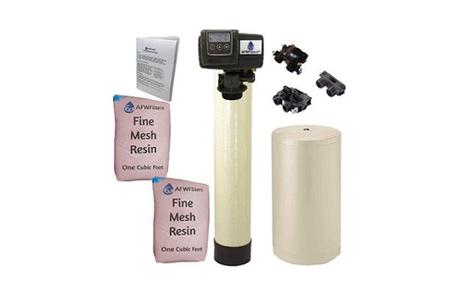Finding out the cause of that brown is important as it will guide you on how to get rid of brown well water.
 red land cotton reviews
red land cotton reviews
Have you ever tried filling a cup of clean water only to find out that the well water coming from the tap is brown in color?
One of the common problems to a majority of wells is the brown color water. If your water supply has built up of iron and other minerals, you may notice that it looks brown and leaves stains on appliances and utensils.
You will find that even the sink and the toilet bowls have accumulated brown or reddish rings. So, what causes the brown in well water?
The Main Causes of Brown Well Water
Finding out the cause of that brown is important as it will guide you on how to get rid of brown well water.
When it rains, the rainwater runs down as it sweeps through the soil. After going through the layer of dirt and rocks, the water reaches the aquifer, which acts as the main source of your drinking water. In the aquifer, the water meets a layer of sediments such as gravel, which filters out contaminants. The bottom of the aquifer is an impermeable rock that prevents water from going down further.
With all these processes, what are the reasons for well water to remain brown?
1. Tannins
Tannins are naturally occurring compounds that exist inside seeds, stems and skins. When it rains, the water runs through the tannins, taking them to the aquifer.
Tannins mainly dissolve from the leaves, causing your well water to turn brown. During summer, dry leaves gather on the ground. Water percolates through them, making a mixture that looks like tea. They are not harmful, but they cause a change in taste in water and discoloration of clothes.
2. Iron ore
This is the most common problem of brown well water. Well, the waiter contains various minerals, including sulfur and iron ore.
There is nothing wrong with drinking water that contains iron since iron helps by keeping metal in your diet. However, significant amounts of iron can change the color of your water to brown or reddish. Not only does the water look brown, but it will put you off drinking it.
3. Rust
Rust is a common cause of brown water but is mostly confused with iron. Here, the well water is not brown, but the pipes transport the water are causing it to turn brown.
The insides of your pipes could be rusty, and this automatically causes the water to discolor. If you live in a place where the water pipes were renovated a while ago, it is important to test your water for lead contamination.
4. Silt
Another cause of brown well water is silt. You will also find that your well contains leaves, organic matter or suspended particles, which causes the water to turn brown. To know if your water has sediments, check the filter well for sediments; if there is any, they’ll settle at the bottom.
How To Get Rid of Brown Well Water
After knowing what causes the brown in the well water, it is time to look for solutions. Below is a guide on how one can easily get rid of the brown found in the well water.
1. Water softener
Most people are against using water softeners, but they can effectively get rid of the brown color in your well water.
If the water PH is not too high, a softener may eliminate low iron levels, but then the resin beads can fail frequently.
They work by means of ion exchange, giving the iron molecules a charge that allows them to cling tightly to resin beads in the softener.
Similarly, the water’s PH value must be less than 6.7. Otherwise, the iron can form a precipitate and cause problems. To ensure proper filtration, add salt to your well water.
2. Install iron or rust filters
If you notice that certain parts of your pipes are red while the outlets of other faucets remain clear, then your pipes are rusty.
In case the softener doesn’t work, then you can opt for an iron filter for well water. These filters’ task is to oxidize the ferrous dissolved iron and turn it into particles of ferric iron that can be collected by running water.
The rust filters ensure that the rust particles are removed from the well water plumbing system and maintain a rust-free water supply.
The filters have to be flushed backwashed regularly to remove the buildup of iron particles. Ensure that you have enough water as the process uses a lot of water during the backwash.

3. Neutralize your water PH levels
Freshwater PH varies across the world, depending on weather patterns and natural processes.
PH in drinkable water is an indicator of the water’s alkaline or acid state. A PH value of less than seven indicates acidic water, while a PH value of more than seven indicates water alkalinity. Low PH in water highly contributes to the formation of corrosive water, thus the brown color. You can easily treat your well water by using alkaline materials like magnesium oxide or neutralizing agents like calcium carbonate.
4. The use of enhancement products
Another way to get rid of brown well water is by using enhancement products. Using enhancement products like hydration tablets helps to remove the rust and iron accumulated in the regeneration process.
To ensure that your well water is pure and clean for consumption, add the rust remover enhancement product into the brine well. There are several options for enhancement; therefore, you need to get one that suits your needs.
Final Thoughts
Contaminated water can highly affect a person’s health. To get rid of the brown in your well water, you not only have to clear iron but also make sure that all other contaminants are removed as well.
If you are not aware of why your well water is turning brown water then, test the water to know where the problem is and how to fix it. Once you have the report, you will know how to get rid of brown well water.
